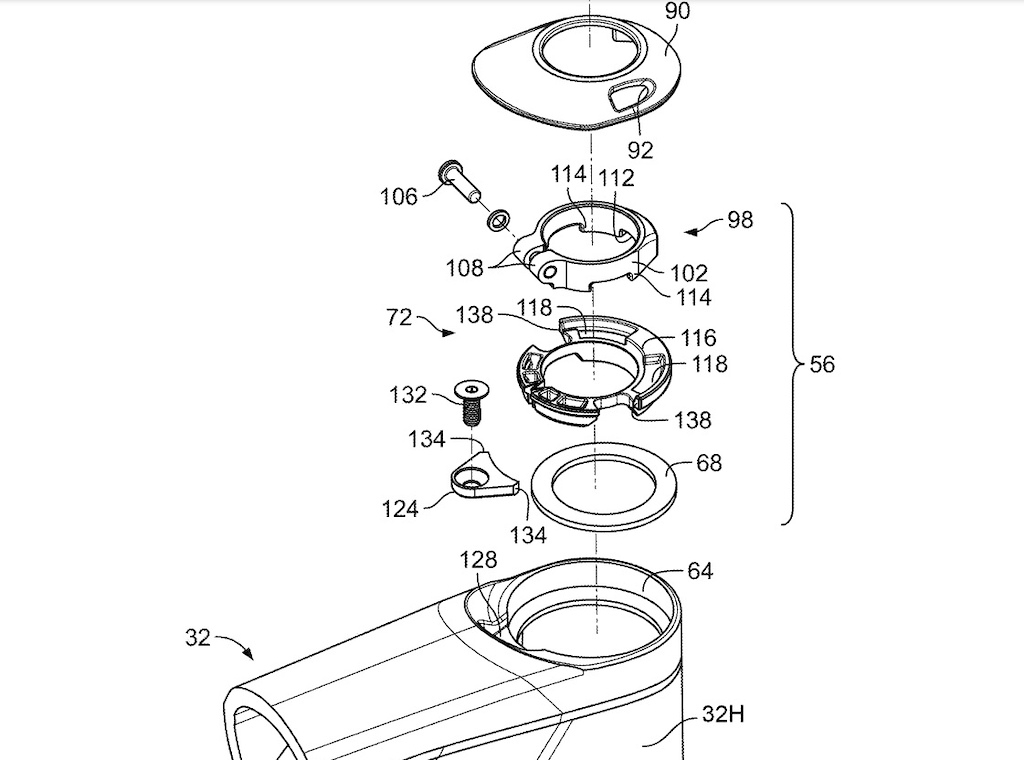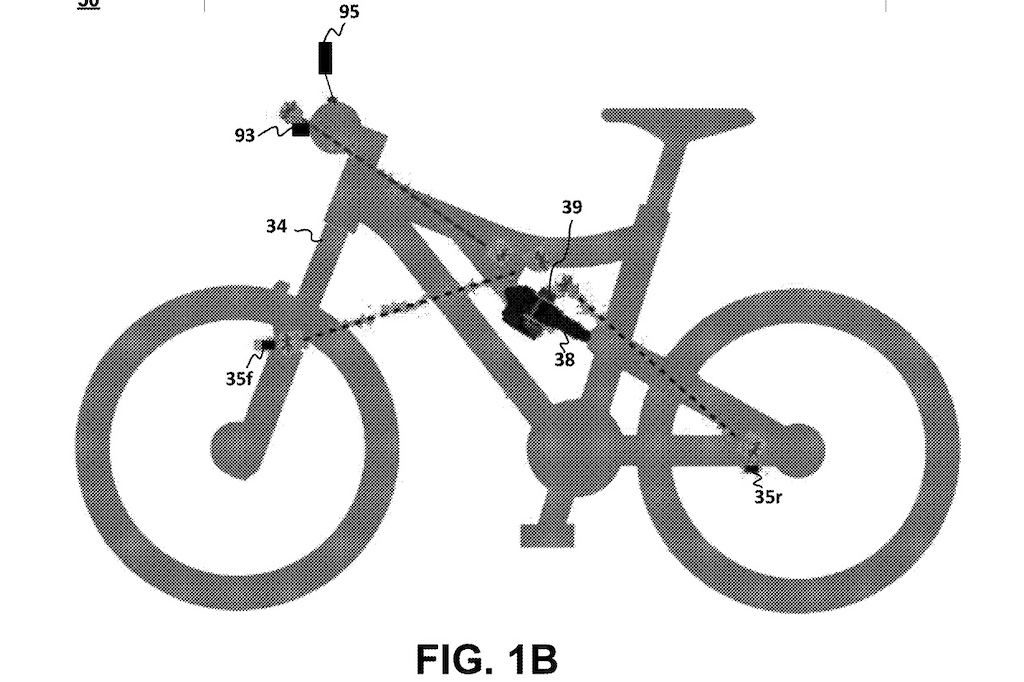
Digging through patent documents can sometimes offer hints at what we might be riding in a few years’ time. Many of the weird and wonderful designs don’t see the light of day, but even then it’s interesting to see what ideas the bike industry’s brains are working on. Here are a few that we’ve spotted lately from Fox, Specialized and Shimano.
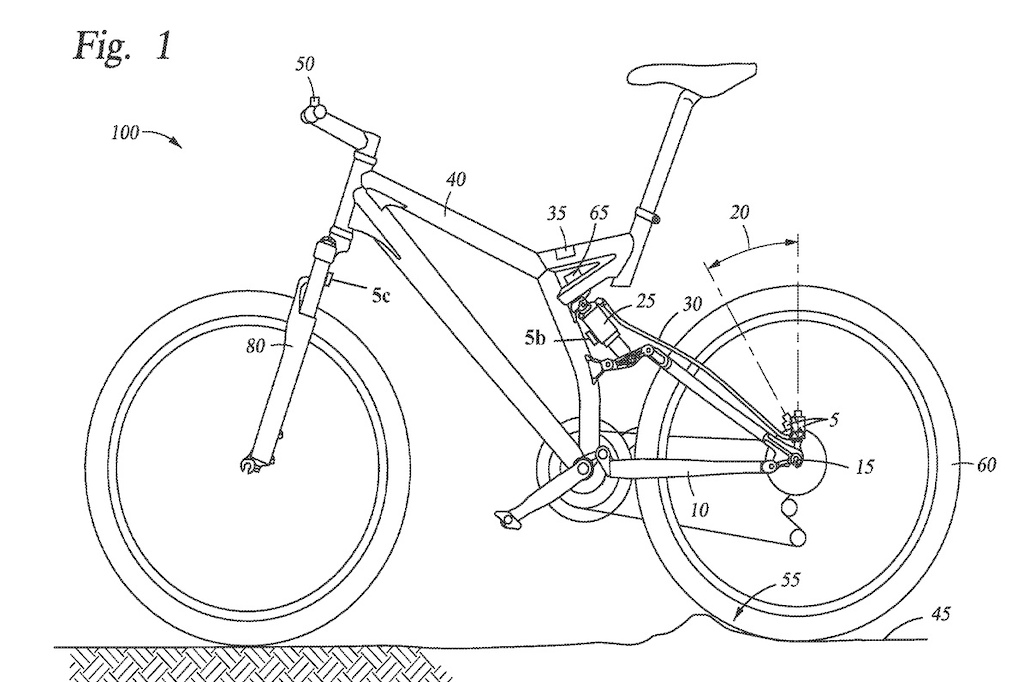
Fox suspension adjuster
Fox seems to be working hard towards expanding the scope and capability of their electronic suspension offerings. Here are two patents they’ve published recently.
A patent was published in their name in April called “Methods and apparatus for suspension adjustment”. To boil it right down, it covers a broad concept of using various sensors to determine how a bicycle’s (or other vehicle’s) suspension is performing, feeding those data into an algorithm and then outputting suggestions to a user interface (which could be a display or an app) so the user can make the appropriate adjustment. and the system could make damping adjustments for you, including “throttling” a valve between open and closed on the fly, depending on the roughness of the terrain the sensors detect.

These sensors could include many things. The patent says “[the] measured characteristics may include at least one of position, velocity, acceleration, stroke, sag, compression, rebound, pressure and temperature of the vehicle suspension.” A pedal sensor is also mentioned.
As usual, the patent is written in such a way as to keep Fox’s options as open as possible, so it’s not clear exactly what any future system would be measuring or what it would do with the information. But one application mentioned in the patent is simply measuring sag and suggesting an appropriate spring rate and rebound setting. That may sound disappointingly basic, but for many riders that alone could be a huge benefit. On the other hand, it could be much more advanced, perhaps including on-the-fly, adjustments to damping settings.

Fox wireless active suspension system
Last August we got the scoop on some prototype electronic suspension from Fox which they were testing with Jesse Melamed. In March this year, they published a patent that might shed more light on where they’re hoping to go with this tech.
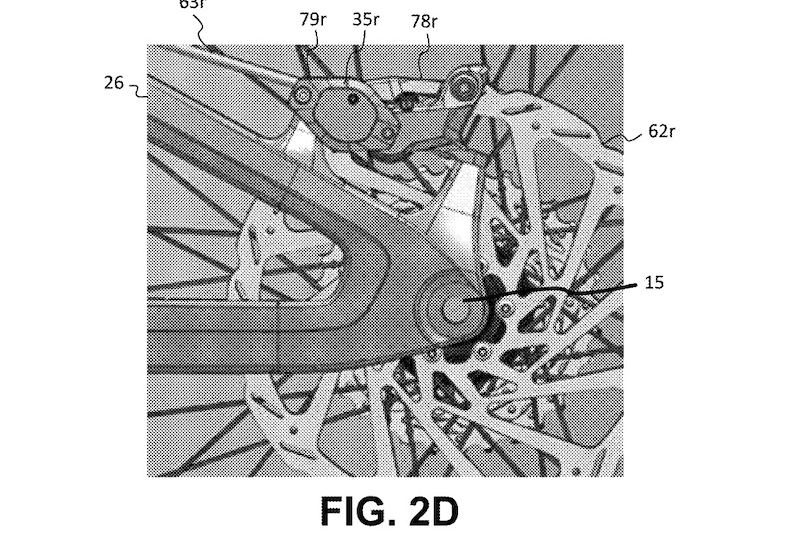
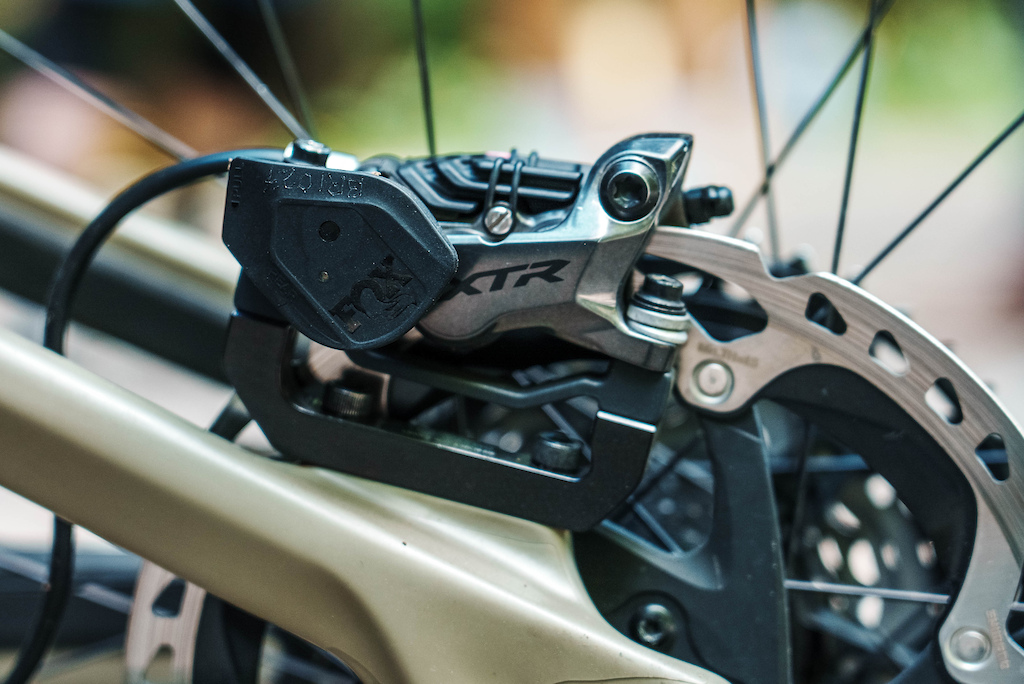
Like the system we saw in real life, it includes wireless sensors mounted on the brake mounts of the fork and swingarm; a handlebar-mounted remote to control the modes and a suspension controller to control the shock (and/or fork) damping, firming it up or softening it depending on the terrain.
Those sensors would most likely include accelerometers. The patent specifies that they are to be mounted on the unsprung part of the bike (fork lowers and/or the swingarm), where an accelerometer would need to be to detect bumps. It also claims that after hitting a bump there is about a 15-millisecond window for the suspension to open up before the rider starts to “feel” the impact, and when we saw Fox’s prototype in real life, they claimed the system could react “within 3 milliseconds”. Besides, in the version we saw, only the rear shock was active, and an accelerometer in the fork could tell the shock to open up long before the bump reached it (if you’re going at 45 kph, it would take about 100 ms for the rear wheel to pass the same bump that the front wheel hit).
On the other hand, the patent also mentions a sensor that could scan the trail in front of the front wheel and tell the fork and/or shock how to react before the front wheel hits it. There’s even talk of a lead vehicle sending signals to the following ones to tell them how to set their suspension. But personally, I think if this type of system does come to market on a mountain bike, it’s likely to be simpler than that at first.

In terms of how the output of the system’s algorithm would affect the damping in the shock, here’s how I think it works. The patent shows a possible damper valve with a spring-loaded conical “nipple” which controls the oil flow, and therefore the damping firmness. The spring pushes the cone (412) against the valve port (402), shutting off the oil flow from the compression side of the damper. When the damping oil pressure behind the conical valve is high enough (for example when you hit a bump), the cone is pushed back and the oil is able to flow past from port 402 to 403, allowing the suspension to compress.
The spring can be preloaded via an external adjuster (408 ), which pre-sets the amount of damping pressure required to “crack” open the valve and allow oil flow.
In terms of the active part, to the left of the spring is a fluid-filled chamber (407) and a piston (406). The fluid pressure can be set by one of a number of solenoids (475) which push on a plunger (465), pressurising the fluid. The fluid pressure moves the piston, changing the preload on the spring (415). Presumably, different solenoids (or combinations thereof) could provide different fluid pressure or volume, and so different amounts of preload on spring, and by extension, different damping firmness. In this configuration, the conical valve (412) could also act as a check valve, preventing oil from flowing back from the rebound side (403) to the compression side (402), so all of it has to go via the rebound valving.

Shimano brake lever & piston
In a patent called “Piston assembly for human-powered vehicle”, dated April 2023, Shimano illustrates what could be a new design of brake lever. The patent mostly refers to the design of the piston assembly, which slides through and seals against the master cylinder, forcing oil through the hose to the caliper. The piston assembly may include a resin primary seal that slides easily but seals tightly against the cylinder. This piston assembly is depicted in a lever body which is quite different from Shimano’s current offerings.

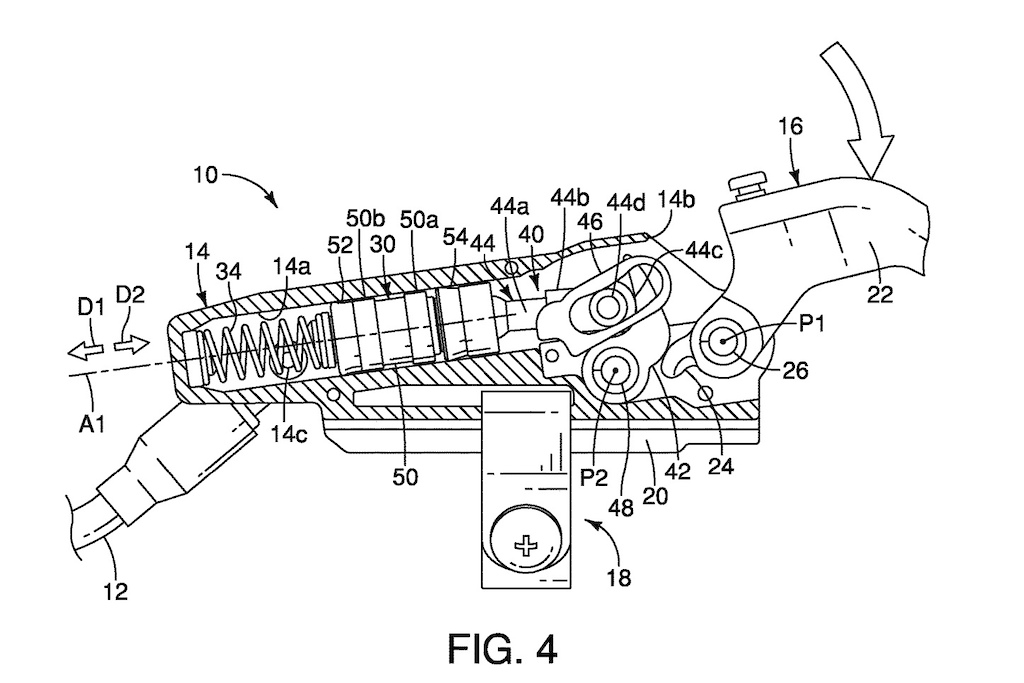
Most obviously, the lever body sits flush against the handlebar, and the brake hose connects to the lever body in such a way that it could be run parallel to, or inside, the handlebar. This is something we’ve seen before. But also, in this case, the piston assembly is driven by a pair of counter-rotating links (numbered 24 and 42 in the drawings above) which in turn drive a connection rod (44), whose path is determined by a pair of cam guides (46), which are shaped to manipulate the leverage ratio between the lever blade and the piston assembly.
In Figure 4, where the brake is applied, the connection rod contacts the cam (42) closer to its pivot point (P2), so there’s a greater mechanical advantage over the system and so more braking force than when the brake lever is relaxed (Figure 3). The purpose of this is presumably similar to Shimano’s Servo Wave technology, but the architecture is a little different, with the cam mechanism here sitting outboard (further from the handlebar) of the lever blade pivot.
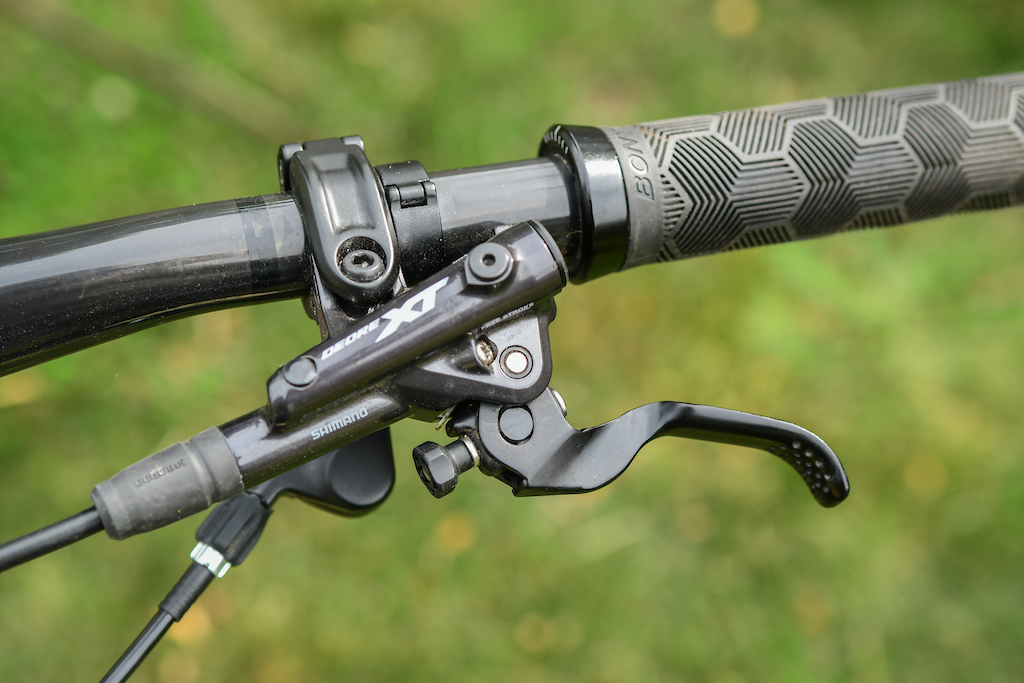
So perhaps Shimano has a new lever design on the horizon that sits closer to the bar, with (arguably) neater hose routing and a new design of piston and cam mechanism.
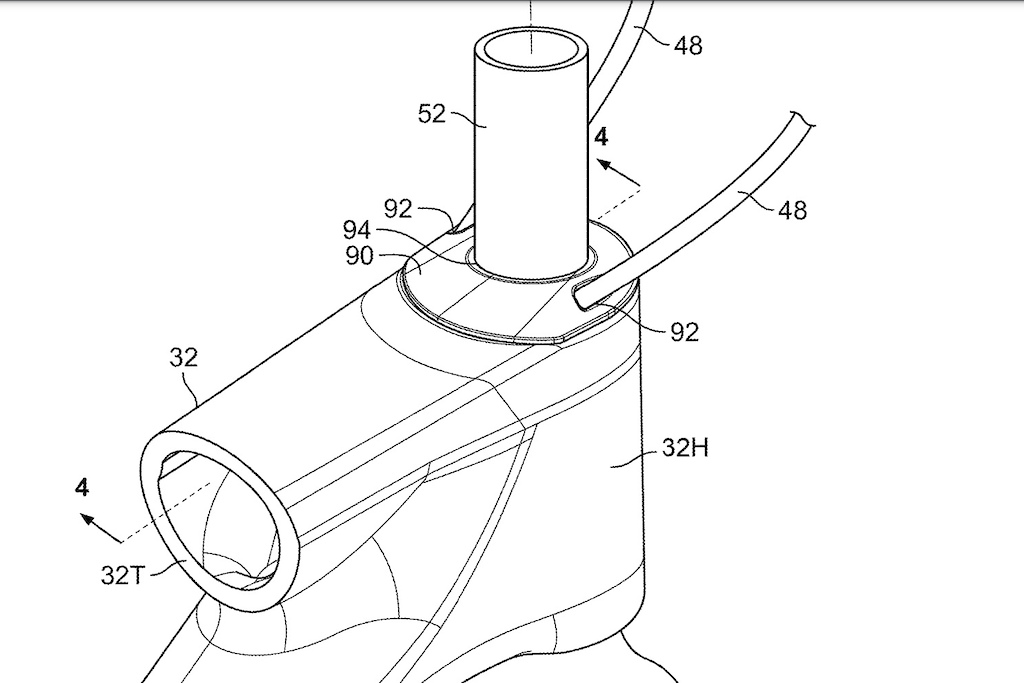
Specialized’s internal-routing steering-limiter headset
Here’s one for the through-headset-cable-routing fans out there (both of them). A patent published in March this year by Specialized Bicycle Components shows a headset that combines routing for multiple control lines (brake hoses and gear, dropper cables etc.), alongside a steering limiter to prevent damage to the cables and to the frame. Specialized’s recently released Epic uses the design shown here, so this is more of a glimpse into the present rather than the future. Still, it is interesting to see how exactly one would go about patenting a cable routing design.
